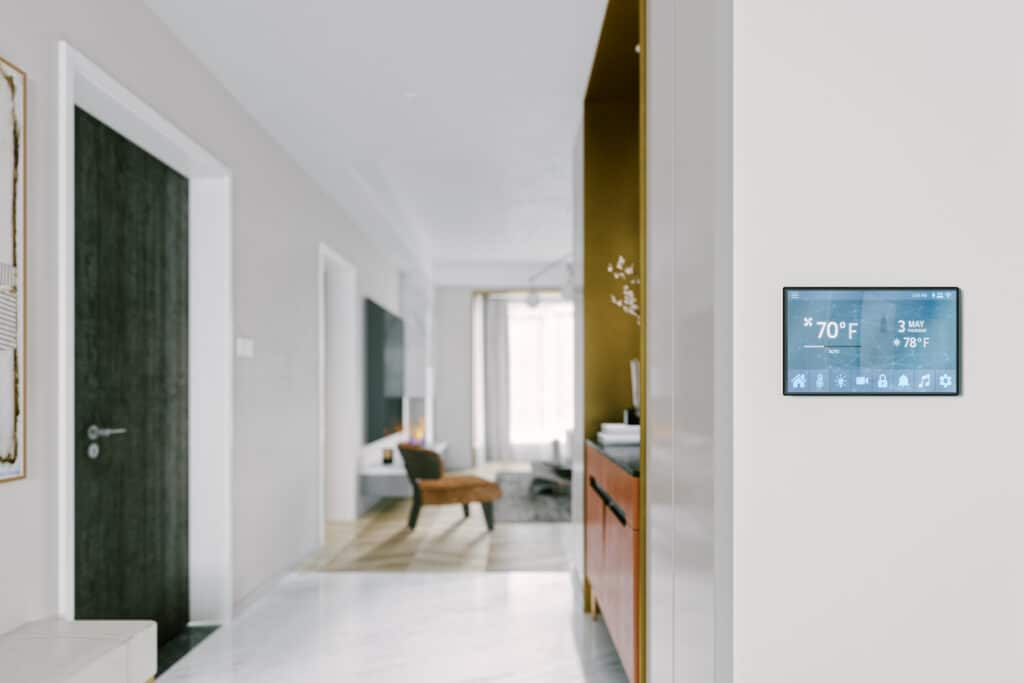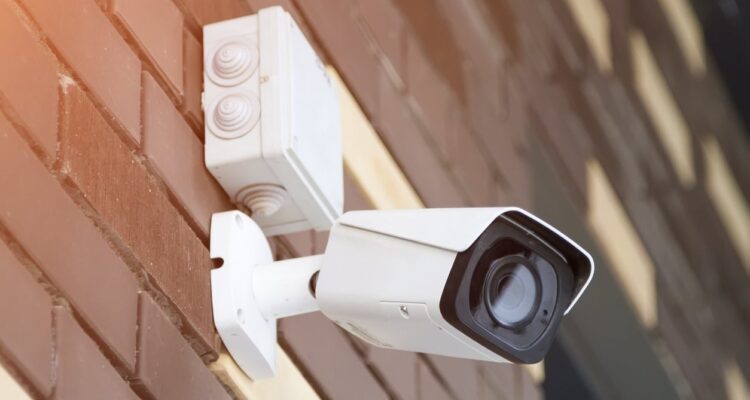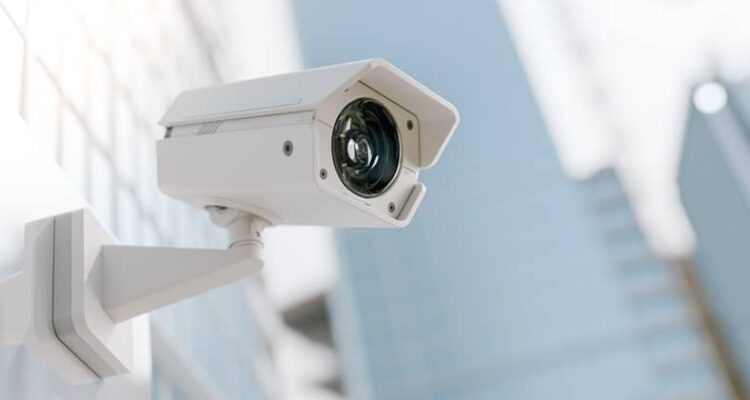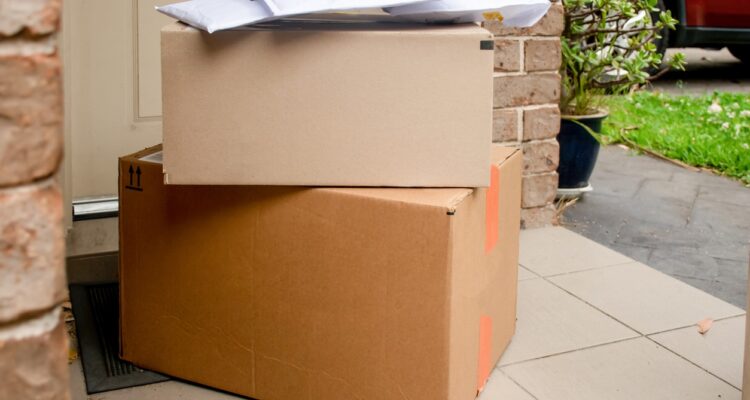We are here to answer the most frequently asked questions (FAQ) about home security systems…

A Breakdown of the Components in Your Home Security System
Installing an in-home security system gives you the opportunity to create the system that works best for your needs. You can put in a basic system with security cameras, automatic lights, and alarms, or you can have every available security component placed throughout your home and property. Once everything has been installed and activated, the system can be connected to a 24/7 professional monitoring service for complete and total security coverage.
Each security system component is designed to deliver a response to a break-in attempt by sending an audible or silent alert. They’re also capable of covering just about every security contingency you can think of, such as breaking glass, unauthorized opening of windows and doors, and detecting motion where no one should be.
In turn, you gain peace of mind with the knowledge that your house is secure and safe when you’re home or away.
The following is a breakdown of the major components that are found in most home security system types. Read on to learn more about what goes into an in home security system, how the components work, and how they protect your home.
Need Home Security? Talk to Us Today
Control Panel

The control panel typically consists of a physical panel with buttons and a keypad. The panel enables you to turn the entire system or individual components on or off (arming and disarming), has a panic button, and connects to the security monitoring company.
If there’s a false alarm, you can stop and reset the security system from the control panel. It can also be used to control home automation devices.
Most home security system types come with a physical control panel along with a web interface so you can monitor the system. They connect to a 24/7 professional monitoring company that takes care of responding to security system alerts.
The purpose of the control panel is to give you physical control over the alarms and other components that are part of your in-home security system. It’s both direct control and a backup in case your internet goes down.
Alarms
Security systems use audio alarms to sound an alert that there’s been a break-in attempt. The alarms are triggered by various components in the security system. When triggered, the alarms make a loud, irritating sound that’s intended to scare off the intruder(s) and tell anyone who’s nearby or listening that attention and action is needed.
Alarms can be used anywhere you feel it’s necessary, and they come in designs that range from a single stand alone alarm to driveway alarms. You can also select alarms that make the type of noise you feel is most effective, such as beeps, voices, buzzers, and single tones.
Automated Lights
Automated lights use timers to turn on and off at set times. They eliminate the need to have someone physically turn the light on and off to deter intruders. Alternatively, lights with motion detectors can be used for areas where full-time lighting isn’t desired, but some kind of light coverage is needed.
Outdoor and Indoor Cameras
Security cameras provide you with the most concrete proof that someone broke into your home, and you can configure them in any way you like. They’re available in designs that make them undetectable by the naked eye or positioned in a blatantly obvious way to demonstrate that the property is being monitored at all times.
You can opt to install cameras both inside and out, have them cover areas that are difficult to watch and combine them with automated lights to make it difficult for an intruder to hide.
Motion Sensors
Motion sensors work by detecting movement and sending an alert to monitoring centers. They’re silent devices that use technologies like passive infrared light, ultrasonic tones, and Doppler radar to detect movement. Each of these technologies bounces a beam of light or sound into the room, and reports to the monitoring center when the beam is broken.
Door and Window Sensors
Sensors for windows and doors come in different designs, but they usually feature two pieces that create a magnetic circuit when closed. One part of the sensor is passive, and is placed onto the door or window. The other part of the sensor is active, and is attached to the frame.
When the window or door is opened, the circuit is broken and triggers the sensor. The active part of the sensor sends an alert to the control panel or monitoring system for action.
Glass Break Detectors
A glass break detector, also known as a shock sensor, is a wired patch that adheres to the glass on a window or door. The sensor is designed to detect the motion of breaking glass. When the sensor is tripped, it sends out an alert.
The glass break detector is designed to detect breaking glass only and won’t go off when doors are opened and closed. This eliminates the potential for false alarms, as glass can flex when put under stress.
Smoke and Carbon Monoxide Detectors
These two items are frequently part of an in-home security system, even though they’re not intended to prevent an intruder from getting into the house. Instead, they provide safety by alerting a 24/7 professional monitoring company that there’s danger in the home and emergency services are needed immediately.
Both types of detectors are proven to save lives and are capable of fast detection when a fire starts or an appliance malfunctions and a CO2 leak occurs.
Create the Ideal Home Security System With the Right Components
Everyone’s needs for an in-home security system are different, which means installing security system components that detect and alert appropriately. That is, some areas of your home and property are covered best by a specific component as opposed to another type.
Bringing in a home security installation specialist gives you access to someone who has the ability to assess your property and what kind of security it needs.
Working with a home security installation specialist means you get the best advice on which components are best for coverage. They’ll show you where your vulnerabilities are and how to use different components to eliminate those vulnerabilities.
The end result is your home gets complete security coverage, you have full control over the components, and a 24/7 security monitoring service delivers the backup you need.
Protect Your Home with U.S. Protective Services
US Protective Services provides state-of-the-art home security systems, adding an extra layer of defense to safeguard your home against potential risks. We assist you in choosing and installing a system tailored to your specific needs. As you incorporate more smart home features, our systems can be seamlessly integrated and enhanced to offer even greater functionality.
Contact us today to explore our home security options and find the perfect solution for your home.



